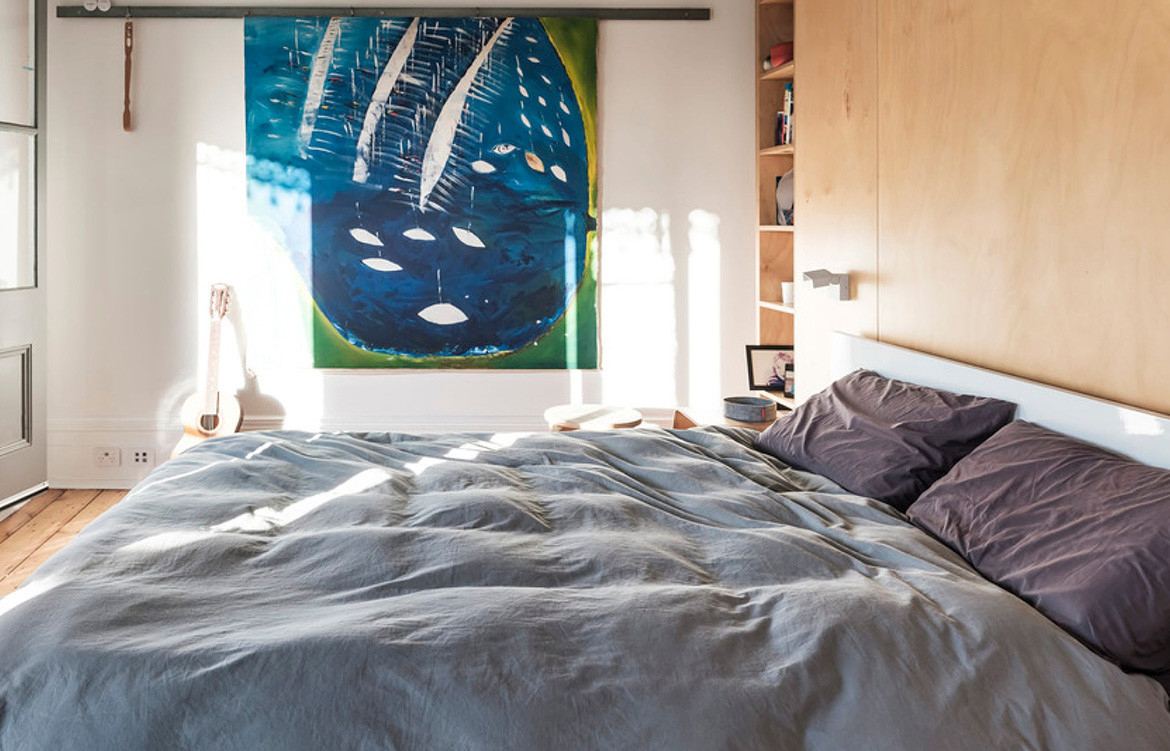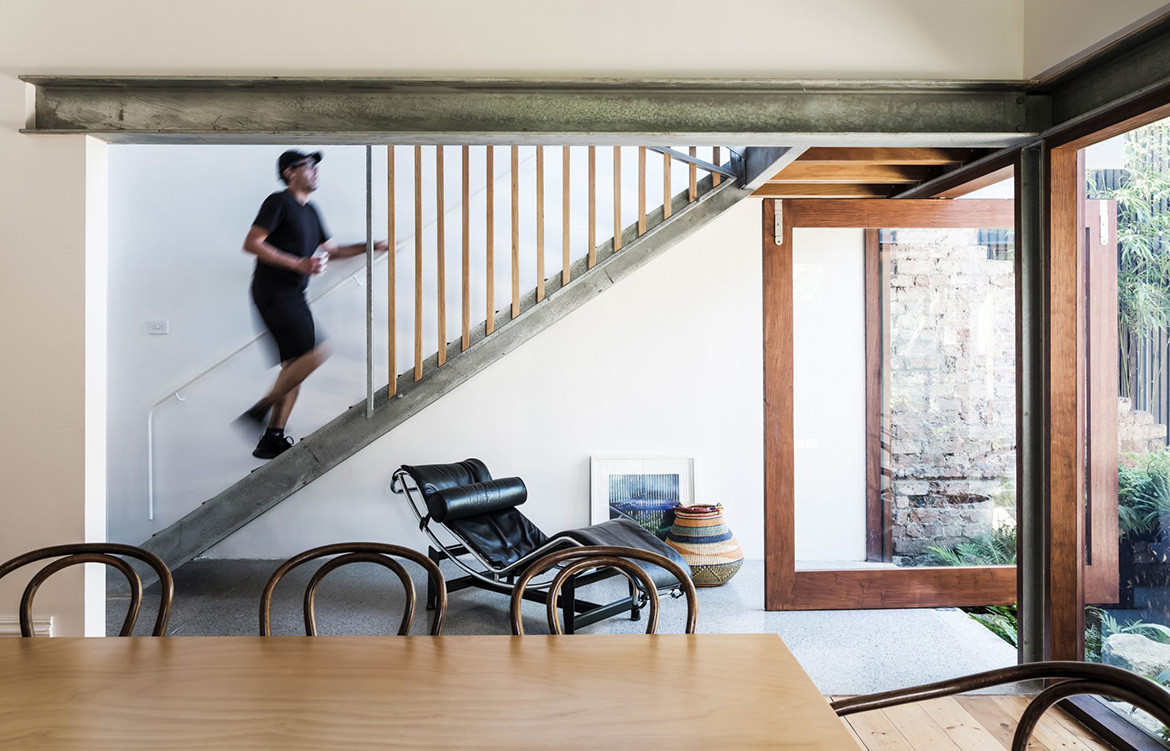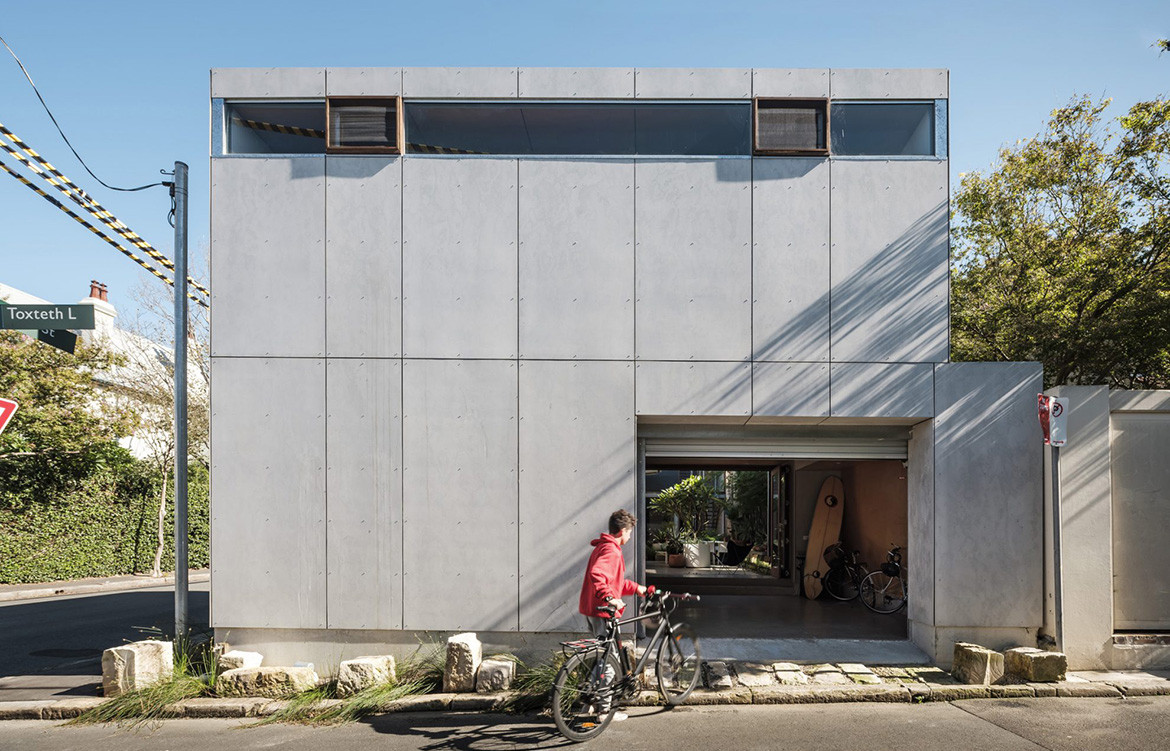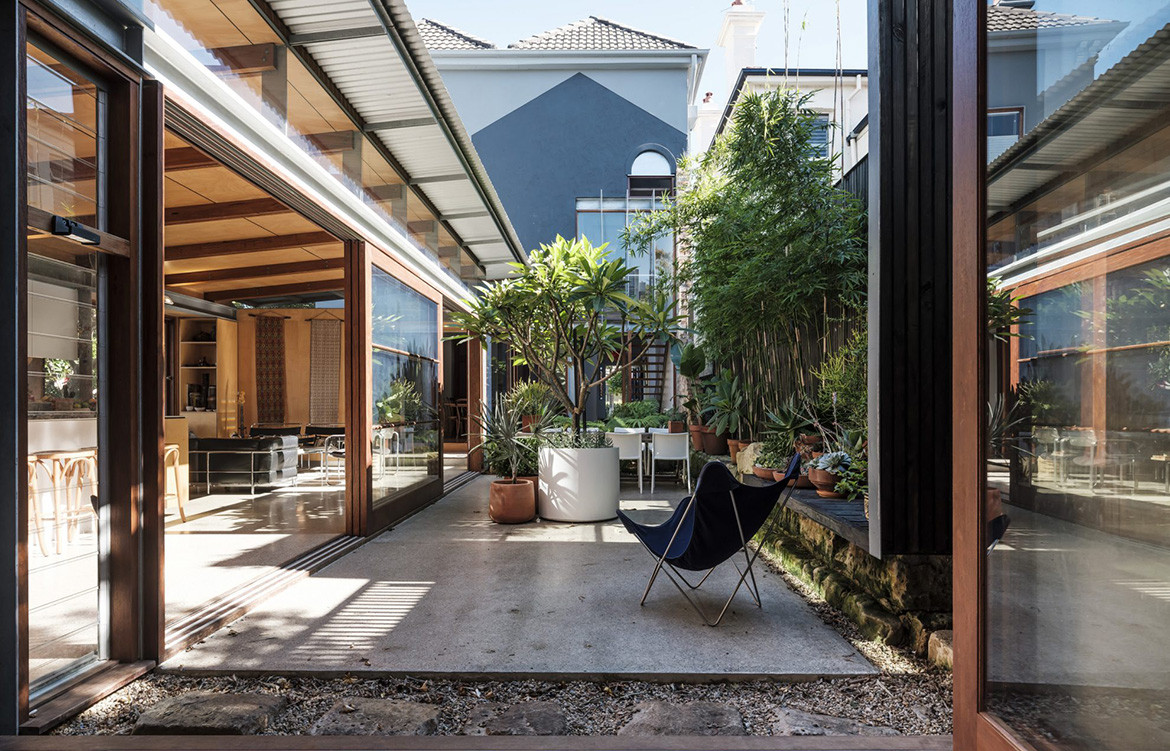When a townhouse is typically restored, much of the pre-existing materials are replaced with newer, more modern alternatives that are installed to prolong the life of the original site. Additionally, when some task themselves with a restoration, they opt for an extension onto the back of the abode and basic refurbishment of the house that sits in front of it. Cox Architecture Principal Joe Agius has done neither of these, instead transforming his family home in Glebe — the Courtyard House — into a house that is centred around a garden, with all elements of the original 1885 structure carefully kept and reused.

Referencing Moroccan Riad architecture, in which common areas and private rooms are shared, Agius has created an area that doubles as a segregator of parental and children spaces, and an area where the family can come together. The aim was to “create a courtyard house that afforded much better amenity than the typical terrace typology,” in which Agius duly succeeded through the means of the central area.
Completed in 1885, the house is Italianate in character and build, and is situated within Glebe’s Toxteth Estate. Between the First World War and World War II, the house was reimagined as a boarding house, with many significant adjustments made to accommodate for more tenants.

Agius acquired the property many years later, but the need to reconfigure the house back into a residential entity was paramount. Fusing 19th century Italian design, Morroccan principles and modern techniques together in the one dwelling, the result is a sensationally poised townhouse that allows for both communal gathering and privacy under the one roof.
Agius says the house was built to be purposely versatile – a feature rarely seen in a 19th century townhouse.

“The design for the house embraces the ideal of adaptability – it is designed to ‘transform’ easily between three modes – single generous 4-bedroom home, two 2-bedroom homes, and a large 2-bedroom home with a separate studio. This adaptability is designed-in – including all building services – it challenges the ‘fixed’ way in which design our housing stock, potentially addressing challenges of housing affordability.”
The building’s exterior marries old with new, with the original single storey dwelling and new wing witnessed from the street. The two pieces are conjoined by a cantilevered roof, with sandstone materials from the existing house acknowledged and honoured in the new design. The facade pays respect to the dwelling’s border house history, with tonal changes seen throughout the exterior surfaces.

The central courtyard that operates as the heart of the building is covered in sunlight throughout the day. Its positioning allows for sunlight to pour through its surrounding spaces, with Agius adopting timber glazed sliding doors to ensure as much natural light as possible into interior areas.
After spending approximately one year carefully planning the transformation of the courtyard house, Agius and his family now possess a home that allows for connection and privacy under the one roof. While not Morroccan in characteristic, the design principles of Riad architecture are used carefully to craft a townhouse that pulls together the best of classic design and modern biophilia and conjoins them at the hip and allows them to beautifully coexist.
Joe Agius (Cox Architecture)
Photography by Robert Walsh
We think you’ll love Italianate House by Renato D’Ettore Architects





